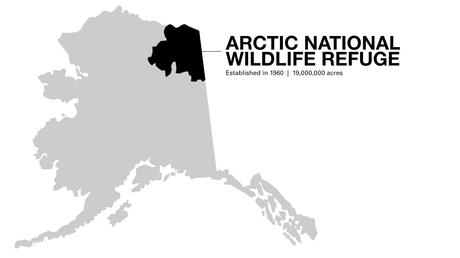 Alaska's Arctic National Wildlife Refuge is big. Really big. It covers more than 30,115 sq. miles (78,000 sq. km), covering a massive and remote wilderness in the northeastern section of the state. Just getting to the refuge, which is home to a massive herd of caribou, not to mention dell sheep, wolves black, brown, and polar bears, can be quite an adventure. Visitors are few and far between, and most discover a vast country that remains mostly untouched by man.
Alaska's Arctic National Wildlife Refuge is big. Really big. It covers more than 30,115 sq. miles (78,000 sq. km), covering a massive and remote wilderness in the northeastern section of the state. Just getting to the refuge, which is home to a massive herd of caribou, not to mention dell sheep, wolves black, brown, and polar bears, can be quite an adventure. Visitors are few and far between, and most discover a vast country that remains mostly untouched by man.Recently, a team of adventurers – led by experienced mountain guide Bob Carpenter – traveled to this wild place to explore it on foot and packraft. There story is told in an interesting blog post on the Hyperlite Mountain Gear website, a company that makes the perfect gear for just such a trip. In order to save time, the men few into the refuge, landing on the south side of the Brooks Range. From there, they hiked up and over the continental divide, used their packrafts to travel down three different rivers, crossed over the coastal plain, and ended their expedition far to the north at the Arctic Ocean. All told, they covered 160 miles (257 km) across this expansive wilderness in about 14 days.
The blog post is accompanied by some spectacular photos from the journey as well, giving readers a chance to see just how beautiful this place actually is. The landscapes range from sprawling and wide open, to mountainous and demanding. Conditions in this part of the world can be challenging, even at the height of summer, and the remote nature of the refuge means that visitors must be experienced and self-sufficient while there. But, from the sounds of things, it is more than worth the effort to get the chance to explore this amazing place.
Using pacrafts is a somewhat new way to explore the backcountry and it has proven to be quite popular in Alaska, where there are plenty of rivers to run. These small, inflatable rafts can be carried just about anywhere, and while they aren't designed for use on serious whitewater, they can help adventurers float their way through some seriously remote places. In this case, it seemed the rafts came in handy for the team, who used them on multiple rivers, paddling right down to the Arctic Ocean itself. Quite a way to travel.
To read their full story, click here.

